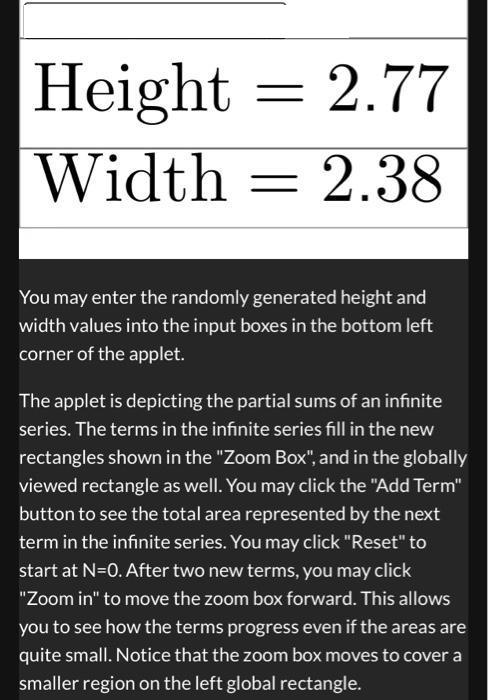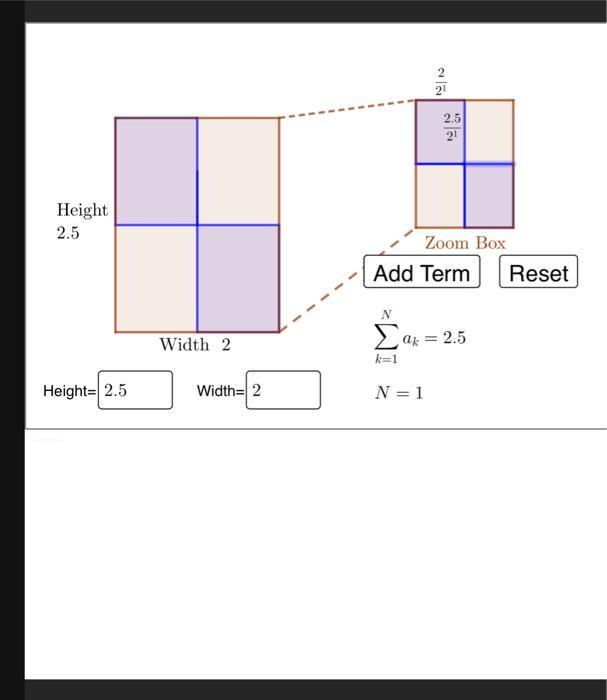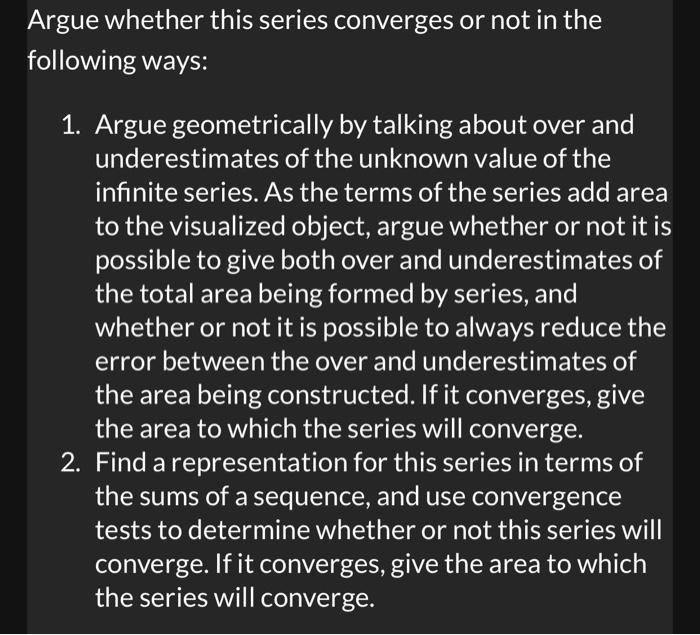Answered step by step
Verified Expert Solution
Question
1 Approved Answer
Height = 2.77 Width = 2.38 You may enter the randomly generated height and width values into the input boxes in the bottom left



Height = 2.77 Width = 2.38 You may enter the randomly generated height and width values into the input boxes in the bottom left corner of the applet. The applet is depicting the partial sums of an infinite series. The terms in the infinite series fill in the new rectangles shown in the "Zoom Box", and in the globally viewed rectangle as well. You may click the "Add Term" button to see the total area represented by the next term in the infinite series. You may click "Reset" to start at N=0. After two new terms, you may click "Zoom in" to move the zoom box forward. This allows you to see how the terms progress even if the areas are quite small. Notice that the zoom box moves to cover a smaller region on the left global rectangle. Height 2.5 Height= 2.5 Width 2 Width= 2 2 2.5 N = 1 i 2 Zoom Box Add Term = 2.5 k=1 Reset Argue whether this series converges or not in the following ways: 1. Argue geometrically by talking about over and underestimates of the unknown value of the infinite series. As the terms of the series add area to the visualized object, argue whether or not it is possible to give both over and underestimates of the total area being formed by series, and whether or not it is possible to always reduce the error between the over and underestimates of the area being constructed. If it converges, give the area to which the series will converge. 2. Find a representation for this series in term of the sums of a sequence, and use convergence tests to determine whether or not this series will converge. If it converges, give the area to which the series will converge.
Step by Step Solution
★★★★★
3.42 Rating (161 Votes )
There are 3 Steps involved in it
Step: 1
Geometric Argument The series being visualized in the applet is an infinite series of rectangles where each rectangle has a width of 238 and a height that decreases by a factor of 2 with each term The ...
Get Instant Access to Expert-Tailored Solutions
See step-by-step solutions with expert insights and AI powered tools for academic success
Step: 2

Step: 3

Ace Your Homework with AI
Get the answers you need in no time with our AI-driven, step-by-step assistance
Get Started


